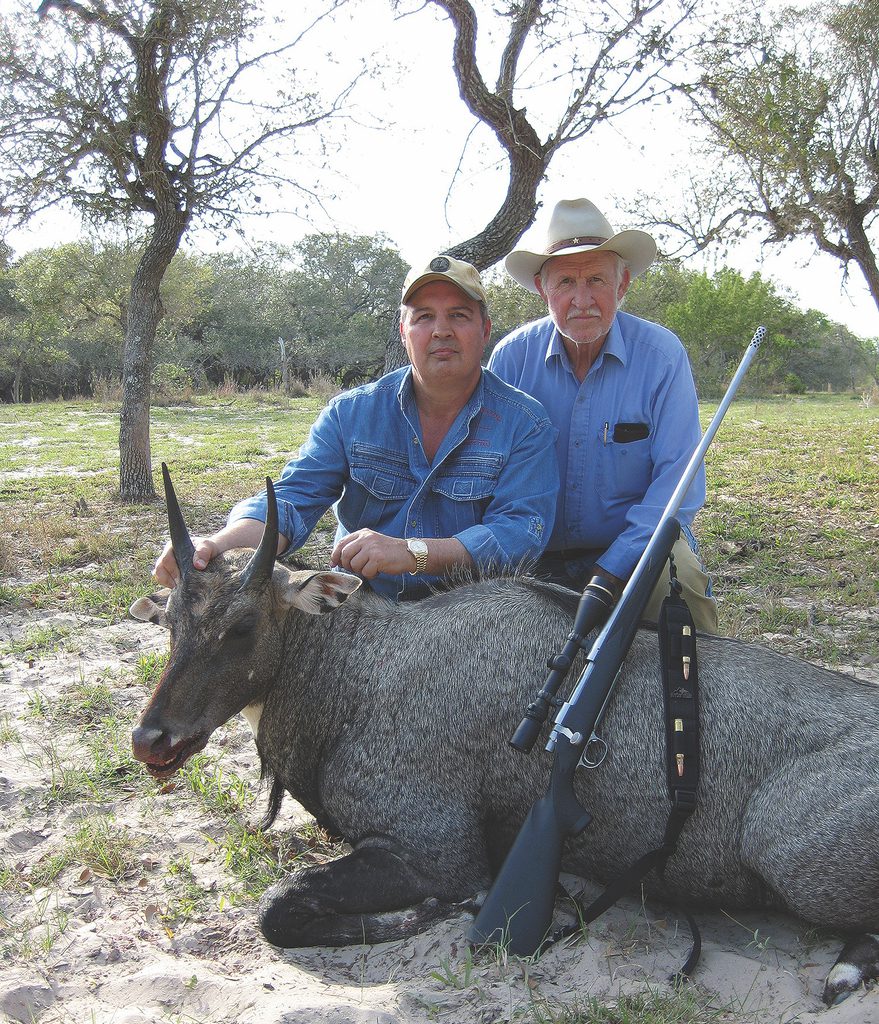
Through the years, I’ve been on several nilgai hunts in South Texas. My experiences, and those of other hunters, have given me a good feel for hunting nilgai that I will pass along.
My first nilgai hunt took place on the Kenedy Ranch with the local game warden who was a hunting buddy. He took me on a meat hunt for a nilgai cow several years ago. I soon found out how elusive nilgai can be when hunted. We were after a small group of cows that frequented a particular area of the ranch. But, try as we might, we couldn’t find the cows. After a full morning of hunting, we ran into a cowhand who had seen the nilgai, and we followed his directions to a mesquite motte near the west side of the ranch.
We stayed in the truck and slowly searched the brush, looking for the tan-colored cows. Finally, we spotted one cow back in the brush. She stood still, and was well camouflaged by the thick mesquite. “Do you see her,” the warden asked. “Yes, but barely,” I replied. She remained still, standing about 75 yards away, as I put the barrel of the .30-06 Winchester out the truck window. These cows were wild, and I couldn’t chance getting out of the truck to shoot. I had the .30-06 sighted 2-inches high at 100 yards, so her shoulder made for a good target at 75 yards. It was an easy shot.
A grown nilgai cow weighs about 300 pounds, hair, hide and all. Hunters must be prepared to deal with a big animal when field dressing a nilgai. Bulls are 100 pounds larger. There is a lot of meat on both, and cow nilgai may be the best tasting of all Texas exotics.
I’ve been with other hunters who have taken “blue bulls” on King Ranch and other ranches. My friend Jimmy Gallagher took two mature bulls on two occasions on the Norias Division. We once filmed a hero fireman from Kerrville for TTHA’s TV show several years ago who had saved a life. He took a big blue bull on the Norias. Tommy Kaye, a close friend from Yoakum, used his .375 Winchester to take a young bull on the King Ranch.
The body structure of a nilgai antelope is different than the deer family. A nilgai’s lungs are between the shoulders, so a good lung shot should go directly through the shoulder. I watched a young hunter shoot a big bull behind the shoulder with a .270 several years ago. The crippled bull eluded the hunters for several hours, and was never recovered.
Nilgai hunters need a lot of firepower to bring down a big bull. The .300 Magnums with heavy bullets do a good job, if the animal is shot through the shoulder. Some hunters use .375 Magnums. Calibers such as .270 with 150-grain bullets, and the .30-06 with 180-grain bullets are good for cow nilgai.
Hunting is usually “safari” style—riding and looking. When animals get spotted, the shooter closes on foot and shoots from a rest with shooting sticks. Another good method for midday is waiting in a stand near water to waylay a nilgai coming for a drink. —Horace Gore
Photo: Horace Gore (right) with his friend Jimmy Gallagher.


